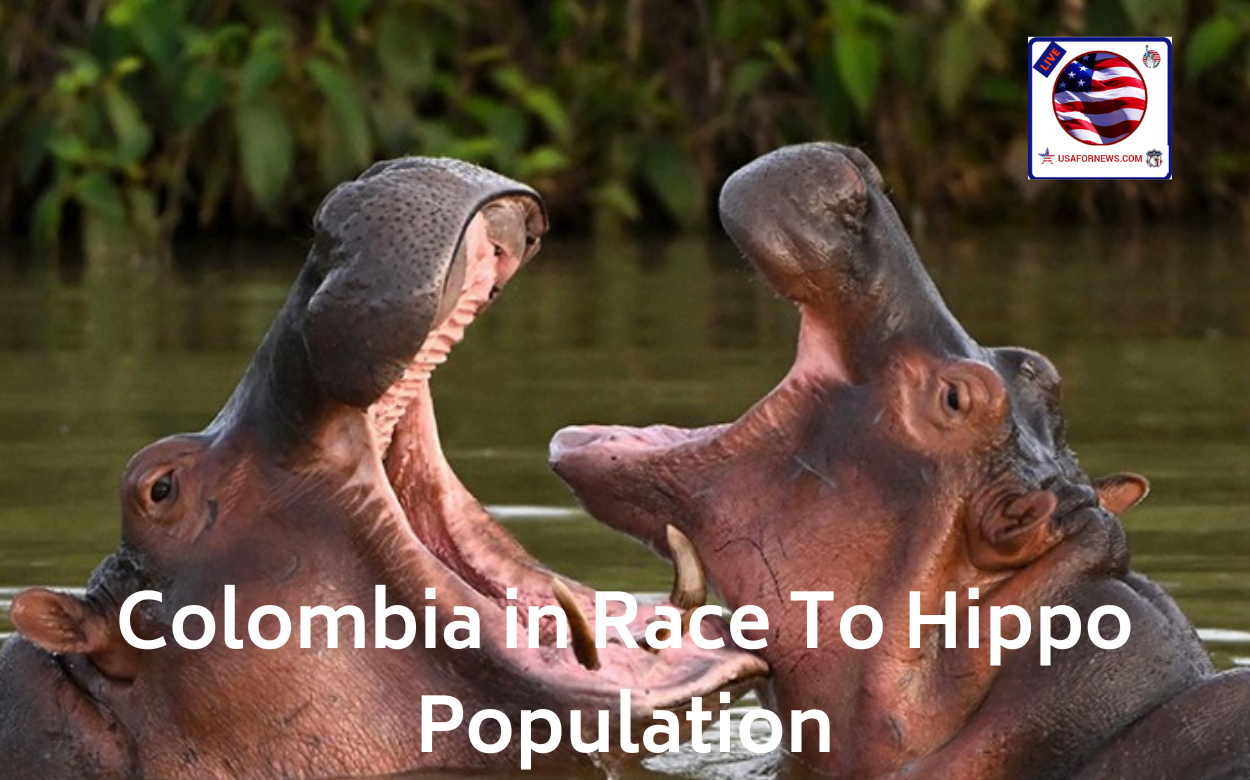Colombia in Race To Hippo Population | Colombia’s Strive to Control and Reduce Population in Ecological Race

Colombia in Race To Hippo Population USA Today News :- In a unique ecological endeavor, Colombia has embarked on a mission to control and reduce the population of hippos, a non-native species that has proliferated in the country. This ambitious project, as reported by USA Today News in 2024, showcases Colombia’s commitment to preserving its natural balance and biodiversity. In this blog post, we delve into the details of this ecological race and the measures taken by Colombia to manage its burgeoning hippo population.
In March 2023, it was announced that the Colombian government is proposing transferring at least 70 hippopotamuses to India and Mexico as part of a plan to control their population. Authorities estimate that 170 hippos currently inhabit Colombia and there is a potential for the population to increase to 1,000 by the year 2035.
Colombia in Race To Hippo Population The Unlikely Hippo Invasion:
The story begins with an unexpected turn of events – the introduction of hippos to Colombia by the notorious drug lord Pablo Escobar in the 1980s. Originally brought to his private zoo, the hippos were left to roam free after Escobar’s demise. With no natural predators and abundant resources, the hippo population exploded, presenting a unique challenge for Colombian authorities.
Ecological Consequences:
While hippos are native to Africa, they are not a species naturally found in the South American landscape. Their presence in Colombia has triggered a range of ecological consequences, including competition for resources with native species, alteration of water systems, and potential threats to local ecosystems. Recognizing the need for intervention, Colombian authorities are now in a race against time to control and reduce the hippo population.
Colombia in Race To Hippo Population Colombia’s Strive for Environmental Harmony:
Colombia’s efforts to address the hippo dilemma underscore the nation’s commitment to environmental conservation. The government has implemented a multifaceted approach, combining scientific research, public awareness campaigns, and strategic interventions to manage the hippo population without causing harm to the environment.
Scientific Solutions:
Leading scientists and conservationists are collaborating on research initiatives to better understand the hippo population dynamics and its impact on Colombian ecosystems. This knowledge forms the basis for developing effective and humane strategies to control the hippo numbers.
Public Awareness Campaigns:
Colombia is actively engaging its citizens in the ecological race by launching public awareness campaigns. These initiatives aim to educate the public about the environmental consequences of the hippo invasion and garner support for conservation efforts. By fostering a sense of responsibility among the people, Colombia hopes to create a collective effort towards a sustainable solution.
Balancing Act:
Finding the right balance between managing the hippo population and ensuring the well-being of the environment is crucial. Colombia’s approach involves evaluating various methods, including sterilization, relocation, and controlled hunting. Striking this delicate balance requires careful consideration of ethical, ecological, and cultural factors.

